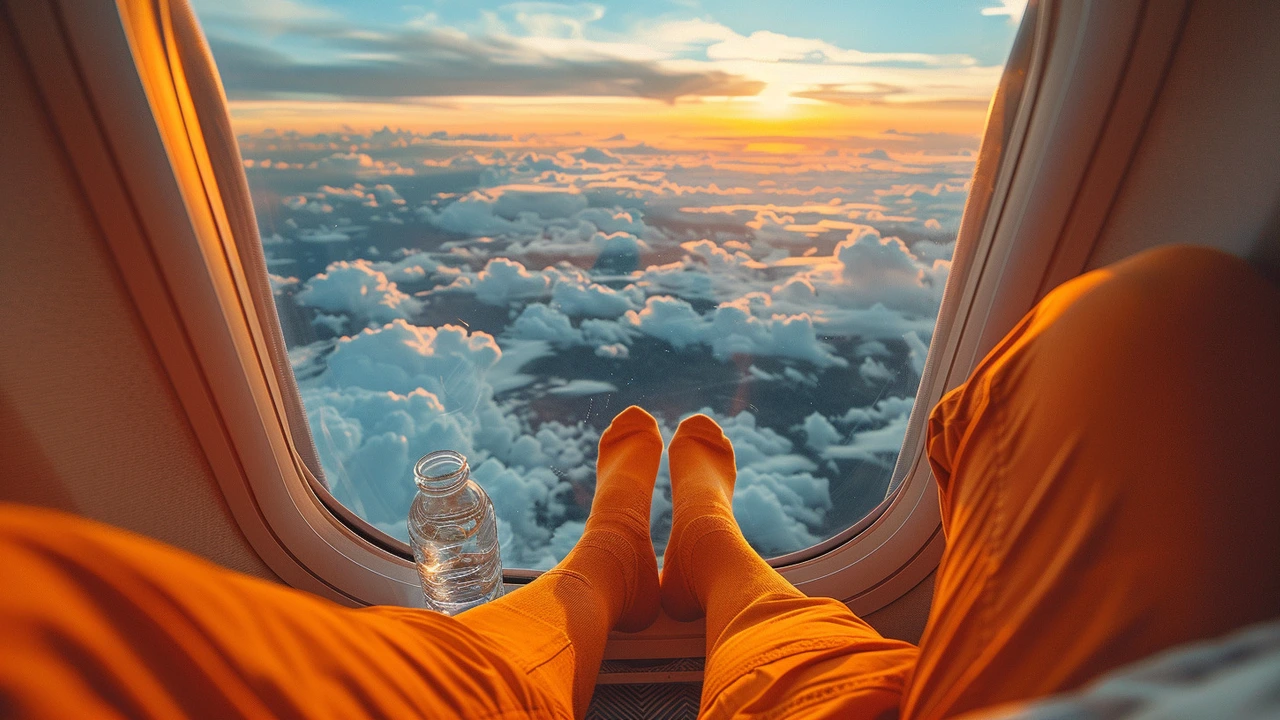Prevent Swelling on Long Flights: Practical Tips (May 2024 Archive)
Sitting still for hours makes your legs and feet puffy. This archive highlights one clear guide published in May 2024 with easy steps to reduce swelling and stay comfortable on long flights. Follow these tips and you'll notice less tightness, fewer aches, and better circulation by the time you land.
Why swelling happens
Prolonged sitting lowers blood flow from your legs back to the heart. Fluid pools in the lower limbs and the pressure in capillaries rises, so tissues soak up more fluid. That’s why ankles and feet stretch and shoes feel tighter after a long flight.
Simple moves you can do on the plane
Stand up and walk the aisle at least once every hour if you can. If you can't leave your seat, do ankle pumps: point toes down, then flex up, 20 reps every 30 minutes. Do seated calf raises by lifting your heels while keeping toes on the floor for 20 reps. Add ankle circles and toe scrunches to wake circulation.
Graduated compression socks (15–20 or 20–30 mmHg) give the most benefit for long flights. They squeeze gently around the ankle and gradually less toward the knee to push blood upward. Wear them before you board and for the whole trip. People with circulation problems should ask a doctor before using higher compression levels.
Drink plain water frequently. Aim for a glass every hour rather than chugging at once. Avoid alcohol and heavy salty snacks; alcohol dehydrates you and salty food makes your body hold water. Light meals, fresh fruit, and lean protein keep you feeling steady.
An aisle seat lets you stand and stretch more often. Pick seats with extra legroom when possible. Wear loose layers and avoid tight waistbands or restrictive socks. Crossing your legs slows venous return, so keep feet flat or slightly elevated when possible.
If you’ve had blood clots before, are pregnant, or have swelling that’s painful, red, or warm, call your doctor before flying. For higher clot risk, a physician may recommend stronger compression, short-term blood thinners, or other precautions.
Elevate your feet on a carry-on when the seatbelt sign is off. Wiggle toes and shift weight often. Use a foam roller or gentle massage when you can. Keep a water bottle at hand so you’re not tempted to skip fluids.
Long flights change risk: over four hours the chance of noticeable swelling rises. For trips longer than three hours, wear compression socks and stand or walk every 60 to 90 minutes. On long layovers, walk briskly for 10 to 15 minutes to reset circulation before the next leg right away.
This archive post gives practical steps you can try on your next trip. Pick two habits to start with — compression socks and regular ankle pumps do the most good for little effort. Safe travels and lighter legs ahead.
Effective Tips to Prevent Swelling During Long Flights
Learn practical and effective ways to prevent swelling during long flights. This guide provides useful tips and interesting facts about maintaining good circulation and reducing discomfort while flying. Ideal for frequent travelers looking to make their journeys more comfortable.

